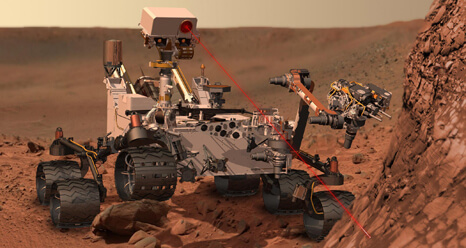(Video) The launch which was carried out shortly after five o'clock looked smooth, when the ignitions were carried out on time. Contact was made with the spacecraft and its instruments are working
17:12

A short time ago, at around 17:00 Israel time, NASA's Curiosity spacecraft was launched to Mars on an Atlas rocket at the Kennedy Space Center in Cape Canaveral, Florida.
From watching the TV broadcasts, it seems that at least for the first ten minutes the launch was smooth and went well, with all the stages ignited on time and separated at the right time.
The spacecraft carries a space robot that will be several times larger than the robots that have been on Mars so far and has ten instruments for observation and chemical measurements to detect life on Mars, as well as a radiation sensor to test how hostile the Martian environment is for future manned space flight, even if from the time the Curiosity mission was planned until the launch , meanwhile, the Orion program was canceled, one of the highlights of which was supposed to be a manned flight to Mars.
However, even NASA is aware of the statistics according to which about two-thirds of the 40 missions launched to Mars failed in their mission.
Update 20:00 - Curiosity in good condition
Signals sent from the MARS SCIENCE LABORATORY spacecraft carrying the Curiosity SUV were received by ground control shortly after launch. The spacecraft is now moving freely towards Mars after separating from United Launch Alliance's Atlas 5 rocket. The launch was carried out on time - 10:02 a.m. EST (17:02 Israel time) followed by launch 41 at the Cape Canaveral Air Force Station.
"The spacecraft is in good shape and on its way to Mars," said Pete Theisinger, MSL project manager at NASA's JPL in Pasadena, California. He thanked the Kennedy Space Center crew for the successful launch.
"We're ready to land on Mars and we couldn't be happier when it happens," said John Grotzinger, Caltech project scientist. "I believe that the mission will be good. This is an important step for NASA to complete the study of programming life in the universe." Grotzinger added: "It is important to distinguish that as an intermediate mission between Spirit and Opportunity, whose role was to search for water, and between future missions that will search for life, our mission will search for environments that may have supported life in the past."
"Science fiction has become reality," says Doug McCristion, director of the Mars Exploration Program at NASA headquarters in Washington. "We fly to Mars, land the spacecraft on the ground and see what we discover."

11 תגובות
Hugh Cole
What is certain is that we will not see the real findings
What is strange is the way they chose to land the tool on the ground. It looks like a lot of things can go wrong.
Curiosity,
1. It's a computer simulation
2. Why is Mars seen from Earth????
3. You are stupid
Electricity and heat are produced from the heat emitted by 36 plutonium dioxide blocks, each about the size of a marshmallow.
The heat is distributed between all the systems with the help of a liquid, and electricity is produced by utilizing the temperature difference between the external temperature of the environment, and the temperature produced by the natural decomposition of plutonium.
The principle used to generate electricity from heat is quite simple, and you may have already encountered it if you happened to use an electric thermometer. Every electric thermometer works in such a way that it uses two types of metals, which create an electric current when there is a temperature difference between them. This principle is also used in the rover to generate electricity from the heat in the plutonium reactor.
The system provides about 110 watts of electricity (which is a little more than a powerful household electric lamp).
The electricity system is expected to supply 110 watts, for 14 years. After that, a XNUMX percent drop in tension is expected each year.
Can anyone elaborate on the small nuclear reactor that Curiosity is carrying?
Is it really a nuclear reactor?
How does it work? what size is it
Thank you to the respondents.
How do they manage to photograph the rover from such a distance? I estimate that it is hundreds of kilometers. No Yes? Is this some kind of superman camera with an absolutely crazy zoom? Also, why when the photos from the rover itself appear, everything is black in the background and you don't see the Earth? Thanks, Curios.
A small incarnation for a robot, a great incarnation for humanity.
Question: Curiosity has a nuclear engine. How is the heat coming out of the nuclear cell converted into electrical energy?
Is there a small steam turbine there?
The Centauri rocket successfully separated from the spacecraft, the spacecraft is on its way to Mars.
Hope she will arrive safely and send us information for many years (as her sisters did who were designed to live 90 days and survived for several years). the truth? I will also be satisfied with 90 days. Only all the tests will be done successfully.
good week